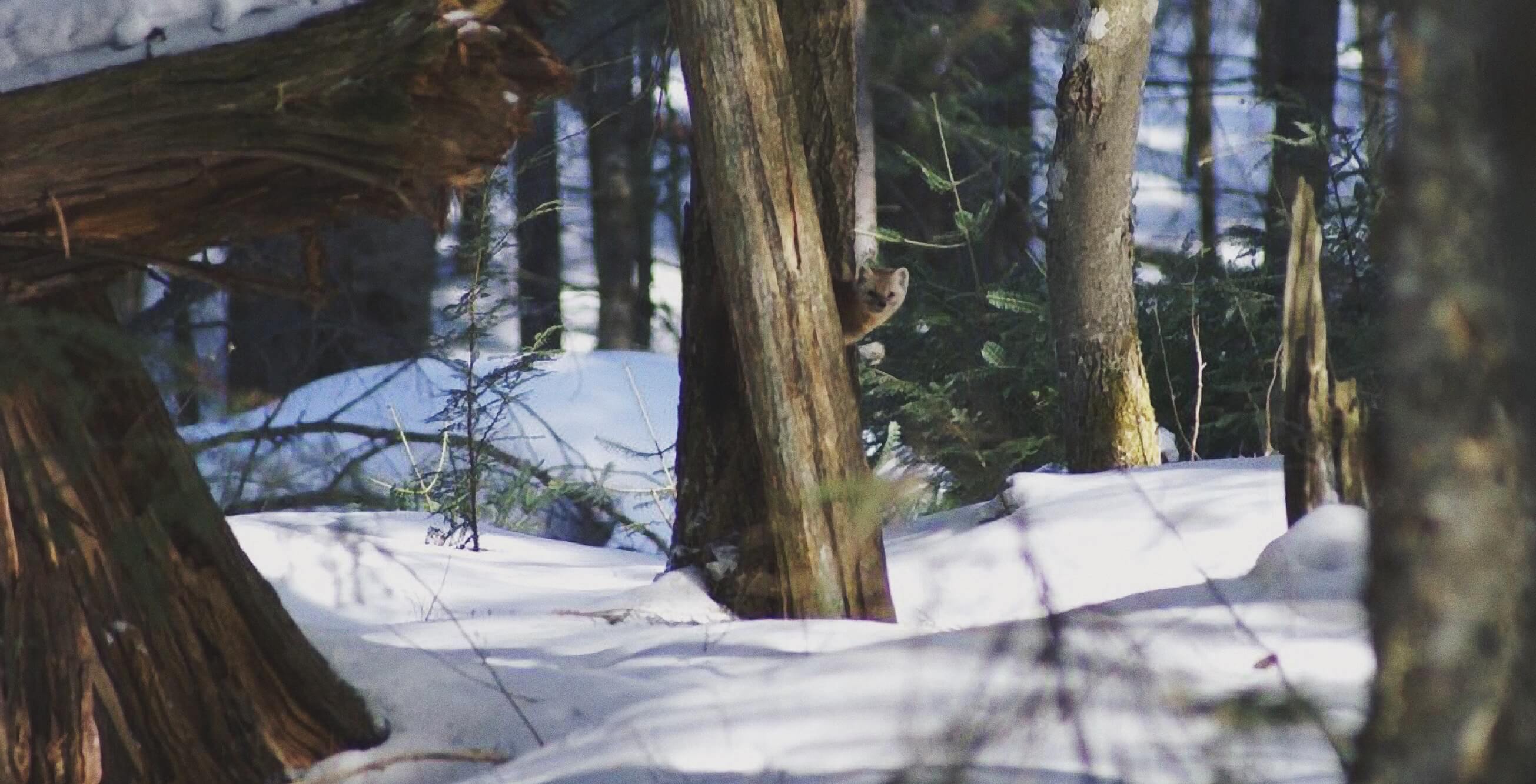The imprint is then harvested the same day, maintaining its pristine state.
Once the track is harvested, pains are taken to preserve its purity. The lost wax method is a sculpting technique wherein a negative core is made in wax; molten metal is then poured in, taking the form from which the mold originated.

American Pine Martin, Algonquin Park. Photo: Rob Baker.
Rob’s combination of technique and materials enables him to lift a part of nature from the ground and preserve it in his sculpture. A transient moment of beauty and power immortalized in a perfect snapshot, elevated by the raw beauty of bronze and grounded in the cool stability of soapstone.
The process is not random. For instance, take the Florida Panther. I would go into an area in Florida where I know there are panthers, and find what I think is panther activity. This particular Panther was a large male who was using an old logging road to travel between his hunting and bedding areas.
Once I know that the animal is frequenting an area, my challenge is to find a track or a series of tracks that I think will represent well when I cast them. I have drawers of tracks that didn’t make the cut. They just weren’t good enough. I must have 20, 25 Mountain Lion tracks that don’t have the qualities that will translate well to bronze. I like to make sure that what I cast is going to produce what I’m looking for in the bronze, which is clarity and detail.
— Rob Baker
At every step of the way, from the track in the ground to the final piece, myriad factors shape the final product. The ones dictated by chance and the whims of nature are balanced by those that are the result of the unique experience and instinct of the artist. Our process is unique, much like our pieces. The piece you hold maintains its direct visual, material and spiritual line to the animal leaving its track in the ground.